Picked up this little tip at the hobby shop last weekend. Go you youtube, type in "Virtual Railfan". Saw this old girl working the yard in Galesburg, IL today on the webcam.

Picked up this little tip at the hobby shop last weekend. Go you youtube, type in "Virtual Railfan". Saw this old girl working the yard in Galesburg, IL today on the webcam.

Recon1342 said:The Nevada Northern Railway is headquartered in Ely, Nevada. They own and operate several different vintage locomotives, including Steam. They host a steam photo shoot annually, and operate numerous trains throughout the year. The shops are open to visitors, and the amount of equipment there is staggering.
They also have Dirt The Railroad Cat
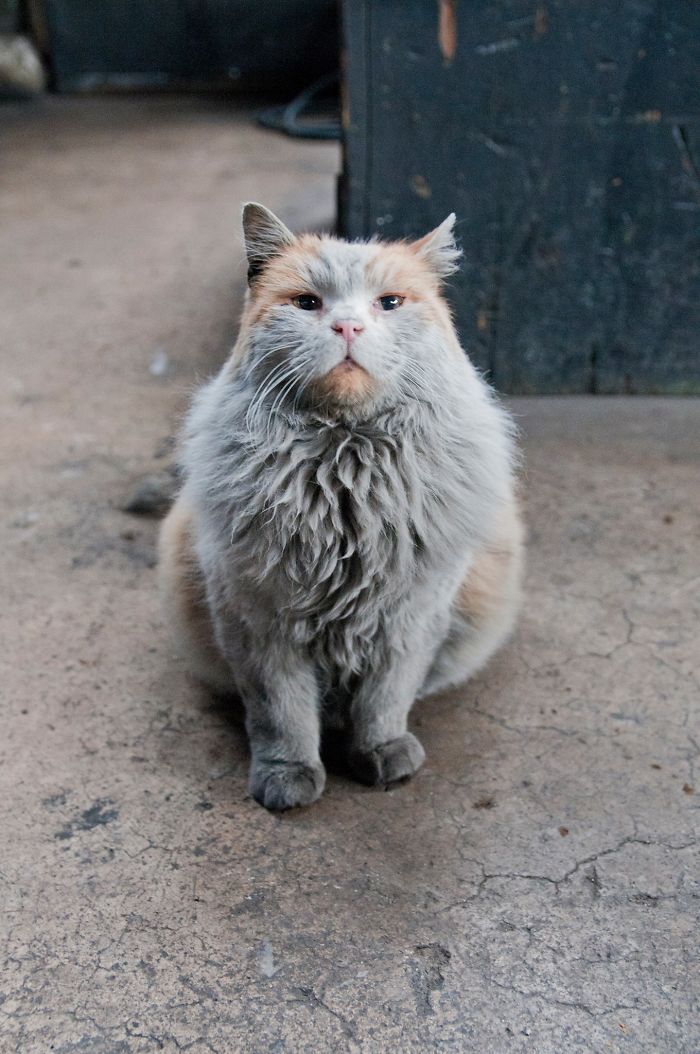
I was in Utica yesterday and decided to swing by the Children's Museum right next to Union Station and snap a photo of Adirondack #25, an incredibly rare Alco RSC-2, and Santa Fe #1479, a 1937 Budd dining car built for the Super Chief, before they get cut up for scrap.
A damn shame, as RSC-2s were rare when new and #25 is one of, I believe, two still extant in the US. The chain link fence was down around here and the hood doors, which were supposedly welded shut when donated, were all popped loose. I considered climbing aboard and trying to find the builders plate to salvage but there were "Smile, you're on camera" signs about.
The RSC-2 was a bit of an odd beast. After the smashing success that was the original 1000hp RS-1, Alco introduced the RS-2, which had a more rounded carbody and the new 244 engine with 1500hp. Back during the RS-1's production run, Alco had built a variant called the RSD-1 for the military and oversees export that traded the B truck (2 axles, both powered) for A-1-A trucks (3 axles, outer two powered, center one non-powered) to spread the weight out and make it operational on light tracks. Thinking that there was a market for it in the US, Alco decided to offer an A-1-A variant of the RS-2 to US railroads for branch line use. They decided to call it an RSC-2. Sales in the US were tepid though, with only 74 finding a home (22 for Milwaukee Road, 4 for Soo Line, 37 for Seaboard Air Line and 11 for Union Pacific) compared to 386 for the regular RS-2. Baldwin would also try offering A-1-A trucked road switchers to little success and Alco would give up on the concept after dismal sales of the RSC-3 (11 in the US) finding that railroads preferred all 3 axles to be power. Fairbanks-Morse, GE and EMD all decided to not offer A-1-A truck road switchers, wisely.

Adirondack #25 began life as one of the 37 purchased by Seaboard Air Line, originally numbered #1531. It stayed on the roster through the Seaboard Air Line/Atlantic Coast Line merger that resulted in Seaboard Coast Line, before being sold off to Florida Power & Light and being repainted into their orange and blue and being renumbered to #25
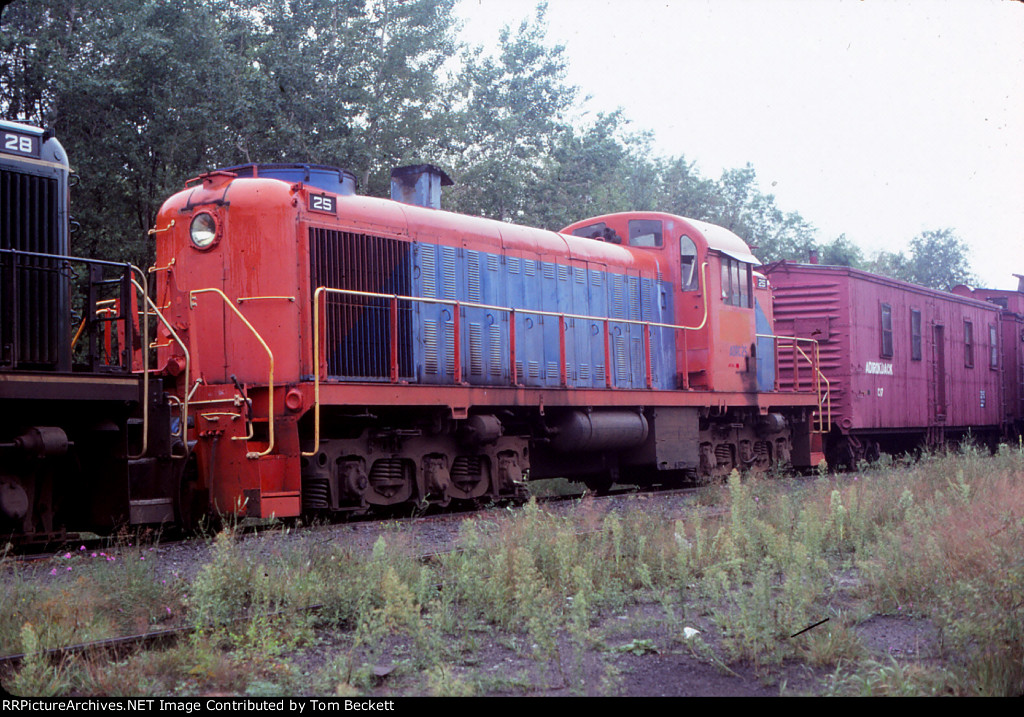
When the ex-New York Central Adirondack Division was revived for the 1980 Winter Olympics at Lake Placid, FP&L #25 was aqcuired along with two ex-D&H RS-3s to operate trains to Lake Placid on the newly formed Adirondack Railway. While the two RS-3s were repainted to black with gold stripes and Adirondack lettering, the #25 was left in the FP&L orange and blue and just relettered. Considering the tracks were long defunct and reported to be in terrible condition, the light-footed RSC was probably a good unit to have around. The original Adirondack Railway went belly-up sometime in 1981 and the locomotives were left at the Thendara depot. They ended up going to the New York, Susquehanna & Western and were towed south to Utica, NY. Info on this period is hard to find, but it seems like one of the two RS-3s was sold to Buffalo Southern and the other hung around NYS&W until the mid-'90s before being scrapped. The #25 apparently never operated during its ownership by NYS&W and I'm pretty sure it had a lot of its mechanical parts removed. I know that as it sits today, it has no traction motors and the 244 engine is just a short block, with not heads, liners, or top end. The shell of the rare Alco then passed into the hands of the Utica & Mohawk Valley chapter of the National Rail Historical Society. They painted it up in dark green with gold stripes and Adirondack lettering and donated it, along with AT&SF lounge car #1479 and a PRR N8 cabin car, to the Utica Children's Museum. The museum is right next door to the Union Station and is right near the CSX main line, which was formerly home to New York Central, the DL&W and the NYO&W, as well as being the southern terminus of the NYC Adirondack division. With the train station next door, a railroad exhibit in the museum and Utica's railroad history, it all made sense and seemed a nice gesture.

Around 2013, things got ugly when the financially-ailing museum called up the U&MV NRHS and told them that they owed "rent" for "storing their equipment" at the museum to the tune of $200 a month for the past 12 years. Yeah, that's $86,400 to save you some math. And the museum director also wanted the equipment off the property ASAP, calling it a "safety hazard" (never mind that the museum was dinged for many other safety infractions not related to the railroad equipment) but they couldn't come get it until the paid the owed "rent". The legal battle has dragged on for 7 years, with the "rent" issue being finally dropped but the equipment still needing to be moved, as the Children's Museum is moving to a new location and there is a big construction project taking place in the area (another huge local controversy thanks to ol' eminent domain). The U&MV announced that any group that could rescue the equipment was welcome to have it, but no one has been able to, thanks to the nightmarish location it is in.
Narrow street, an awning that almost touches the top of the location, a parking lot and a road in between the tracks and the equipment. Oh, and there is a 4-5' elevation drop. Mohawk, Adirondack & Northern, who has a nearby yard said they would store the engine there for any prospective buyer, but physically getting it there was the challenge. Several groups looked at having panel track laid down to the NYS&W spur but found it hideously expensive. And then, it would have to be transited over the CSX mainline, and CSX is notoriously bitchy about any vintage equipment and special moves over their rails. They would be doubly so when it is an ancient unit that has not moved in decades. And Amtrak pounds through there pretty frequently. Don't want to hold them up either.
So, now it looks like the end is here for the poor RSC-2. Yes, it is unlikely it would ever run again (244 parts are just too hard to find), but the body and frame weren't all rotted out and it would have made a good cosmetic display, plus it has an interesting history tie-in (pulling trains to the 1980 Winter Olympics where the US hockey team upset the USSR team). Instead its going to be cut up and scrapped. And they likely won't even make much money because its missing a lot of the heavy parts and the copper-laden traction motors. Pretty sad and frustrating. I think that will leave two RSC-2s left, a Milwaukee Road unit at Mid-Continent and an SAL unit at Railroad Museum of New England.
In reply to NickD :
I'm glad you mentioned Mid-Continent, I'd been trying to remember where this pic was taken, but all I could remember was that it was somewhere in Wisconsin.

In reply to Pete Gossett (Forum Supporter) :
#1385 was parked in 1998, needing major boiler work. They had a brand-new boiler built just last year and I believe are getting pretty close to firing her up again.
Alco's early RS-series switchers were their masterpiece in terms of sales. In the early years, while Alco was ahead of Baldwin and Fairbanks-Morse, they still played a distant second to EMD. For example, while their total production of FA cab unit variants from '46-'59 came in at a solid sounding 1,1401 units, EMD's F3, which was only produced from '45 to '49 sold 1,807 units and the follow-up F7 ('49-'53) sold 3,856 units not including the passenger FP7 variants. So this gives a clue of how badly Alco was getting pummeled. But the early 1st-generation RS units were an example of Alco being ahead of the curve and catching EMD flat-footed.
RS-1: In 1940, the Chicago, Rock Island & Pacific approached Alco about building a new type of locomotive. At this point, the market was broken into end-cab switchers for yard use, carbody passenger units and carbody freight units. It was still very much a holdover from the steam engine era, and even EMD, who never built a steam engine, adhered to this logic. The Rock Island wanted a unit that had the visibility of a switcher, but with gearing that would let it achieve mainline speeds and maybe a steam generator for light passenger usage. Alco took their S2 switcher, which used the old Macintosh-Seymour 1000hp 539T turbocharged 4-stroke diesel, GE traction motors and generator and B trucks. They then stretched the frame and added a short hood to accommodate a steam generator. The result was dubbed RS-1 for Road Switcher-1st in the model line and was capable of 40,000lbs of tractive effort, while being fairly light, having good visibility and capable of running steam heating in passenger cars. The first 13 built would actually end up being requisitioned by the US Army for WWII, but Alco would churn out another 456 before the end of production 19 years later in 1960. The RS-1 would actually be produced concurrent with many of it's RS sucessors and holds the record for the longest production run of a diesel locomotive in the US.

RSD-1: The RSD-1, offered from 1942 to 1946, was a bit odd, in that none were directly sold to US railroads. After the US Army had commandeered the first 13 RS-1s produced, they sent them back to Alco and had them converted from B (2 axles, both power) to C (3-axles, both powered) trucks and then sent them for usage on the Trans-Iranian Railway to resupply the USSR during WWII. Although the 3-motor trucks gave it better traction and spread its weight out better, the generator was left unchanged and still sized for 2-motor trucks, which meant that it had worse performance than the RS-1 at higher speeds. The US Army ended up ordering 150 total, with most of them going to the USSR (who proceeded to reverse-engineer them and build many more as a TE1-120) but a few remaining in the US to operate on bases, and some of them ending up on the ocean floor thanks to U-boats.

RS-2: By 1946, EMD had still not responded to the opening shot that was the RS-1, but Fairbanks-Morse and Baldwin had, both with 1500hp models, and Alco felt the need to respond. The result was the RS-2. Visually, it had a new design, with the rounded hood top replaced with a flat top with generously filleted corners. Under the skin it used a bigger GE generator and the excellent GE 752 traction motor. But the big change was the new engine: replacing the 1000hp inline-6 539T engine was Alco's new V12 244B. Still a turbocharged 4-stroke engine, the 244 was more powerful but had a troubled development history. After realizing that the 539T was limited to about 1300hp max, Alco had gotten permission from the War Production Board to launch a new engine program in 1941, which they called the 241. After three years of development, Alco was having issues with pistons, connecting rods, crankshafts and turbochargers and was not satisified, so the 241 was trashcanned (never seeing production use) and the 244 was developed off of the 241 blueprints. While better than the 241, the 244 still suffered from crankshaft failures (even after a move from cast-steel to forged-steel), improperly designed main bearing caps and saddles that required 600 engines to be replaced, GE air-cooled turbocharger failures and high-pressure fuel pumps leaking fuel into the base and diluting the engine oil which wiped out bearings. So while the 244 could punch out more horsepower from less displacement and using less fuel than its competitors, owners became wary (and weary) of them. Production delays and engine troubles conspired to dip sales to 368 between 1946 and 1950, despite the RS-2 making 62,500lbs of tractive effort, more than both the Baldwin (35 units) and F-M (35 units as well) offerings. And while it still sold less than the RS-1, it still heavily outsold EMD's BL-2, their half-hearted response, which only moved 59 units. As of today, very few RS-2s remain, between four and five.
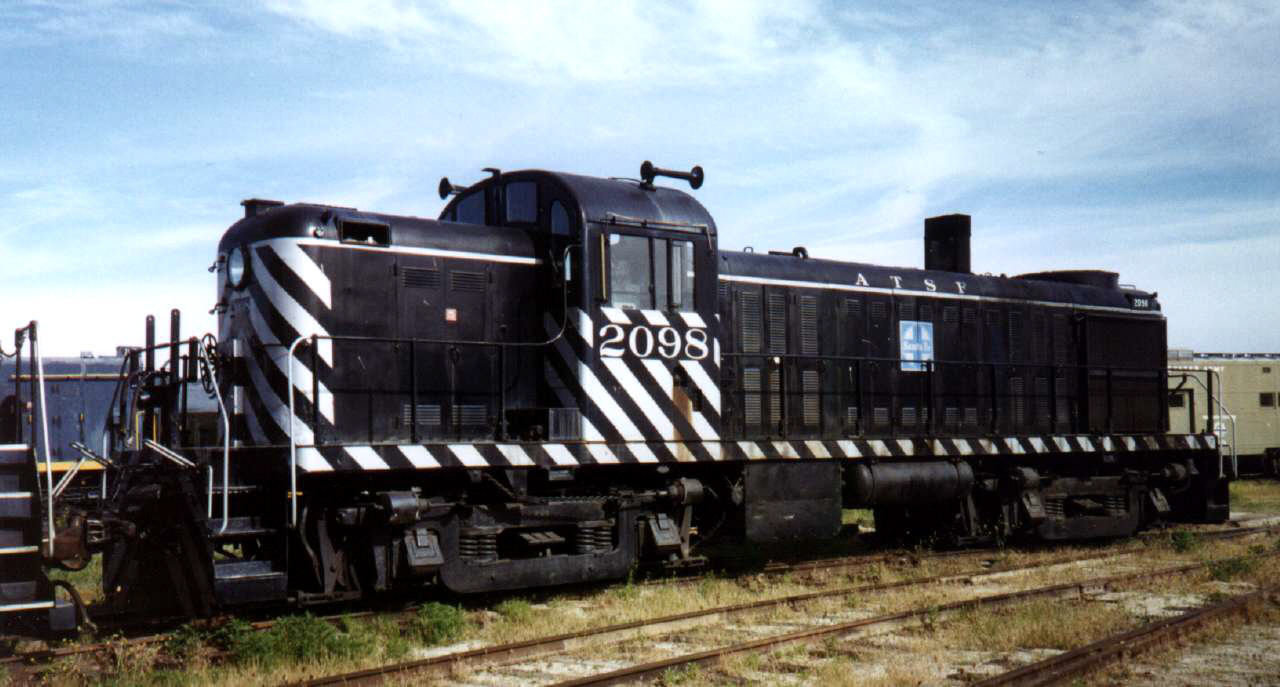
RSC-2: In the same time frame as the RS-2, Alco offered a version with A-1-A trucks, which they called an RSC-2. The idea was that the lower axle loads would make them well-suited for branch line use, and the A-1-A truck was a setup also usually used on passenger locomotives, so it made the RSC-2 seem even more suited for passenger/commuter usage. They generated less tractive effort (due to less weight on each wheel) which dropped their tractive effort down to the 40,000lb range. In the end, Alco sold just 91, with 17 of those going outside the country, and today only 2 remain, with one preserved unit soon to be scrapped. But the railroads that bought them seemed fond of them, with Milwaukee Road keeping them in service for 22 years, before convincing EMD to build them a lightweight SD39 variant, the SDL39, to replace them.

RS-3: By 1949, EMD had finally entered the road switcher market with the GP7, and Alco responded with the RS-3 a year later in 1950. One big change was that, while the RS-1 and RS-2 were configured to run long hood forward, the RS-3 and it's variants went to short hood-forward orientation. It also featured a bump in horsepower to 1600hp (the final 50 RS-2s had also received this power upgrade), although tractive effort remained unchanged. This meant that the RS-3 produced 100 more horsepower with 4 fewer cylinders than the GP7, used less fuel, and generated 20,000lbs more tractive effort. It similarly outpulled the Baldwin DRS-4-4-1500 and the Fairbanks-Morse H-15-44/H-16-44, which meant that the RS-3 was, on paper, the superior locomotive. It's light weight and compact package, insane pulling capacity and passenger-hauling capability gave it a flexibility that the GP7 never really seemed to have. On the New Haven or Central New Jersey, they could be found hauling commuter trains, while New York Central and Pennsylvania preffered to use them on general merchandise freight, and then Southern and Louisville & Nashville and Lehigh Valley beat theirs into the ground in coal drag freight service. In the end, Alco moved a whopping 1,418 RS-3s, their most successful design, with big buyers including New York Central (130), Pennsylvania (121), Delaware & Hudson (104) and Louisville & Nashville (107). Of particular note were the units that PRR and Western Maryland ordered with both steam generators and dynamic brakes, which resulted in an unusually tall short hood, giving them the nicknames "Hammerheads". In the end though, Alco's slow production rate, less-than-stellar customer service (getting replacement parts could take months, while EMD was known to send an 11th prime mover and generator for every 10 units purchased) and the 244 engine's spotty reliability meant it got drastically outsold by the GP7, which moved 2,734 units. But the RS-3s were survivors, often hanging on rosters into the '70s and '80s, when most of their contemporaries were long gone, subject to repeated overhauls and re-engines (EMD 567 engines and Alco 251s were most common) and some are still in general service on lines such as Delaware-Lackawanna and Battenkill.
.jpg)

RSC-3: After the mild sales success of the RSC-2, Alco gave the A-1-A road switcher another shot in the form of the RSC-3, again an RS-3 with A-1-A trucks. This time, response was extremely tepid in the case of US sales. 71 were sold worldwide, but only 11 of them were sold in the US. Alco did not offer an RSC-series ever again, although Canadian branch Montreal Locomotive Works offered a few moderately successful RSC-13s and RSC-24s north of the border. Only one, former Soo Line #2380, is still known to exist, although Soo converted it to B trucks at some point in its life, making it a regular RS-3.

RSD-4: Offered from 1952-1954, the RSD-4 harked back to the RSD-1, and was a C-trucked variant of the RS-2, although it was sold at the same time as the RS-3. Although it only had 1500hp, it carried 70 tons more weight and 2 additional powered axles, which made it generate 89,000lbs of starting tractive effort. The downside to the RSD-4 was that it could not fit a larger generator in the unchanged carbody. This meant that the generator could not feed the demand of the 6 traction motors, and higher speed performance suffered. Due to this, the 244 engine's poor reputation and railroads really not seizing the advantages of 6-axle road switchers yet, the RSD-4 sold very poorly, only selling 36 units. Those that bought them found their lugging power terrific though and used them in heavy drag freight. One RSD-4 survives, ex-Kennecott Copper Corp. #201.
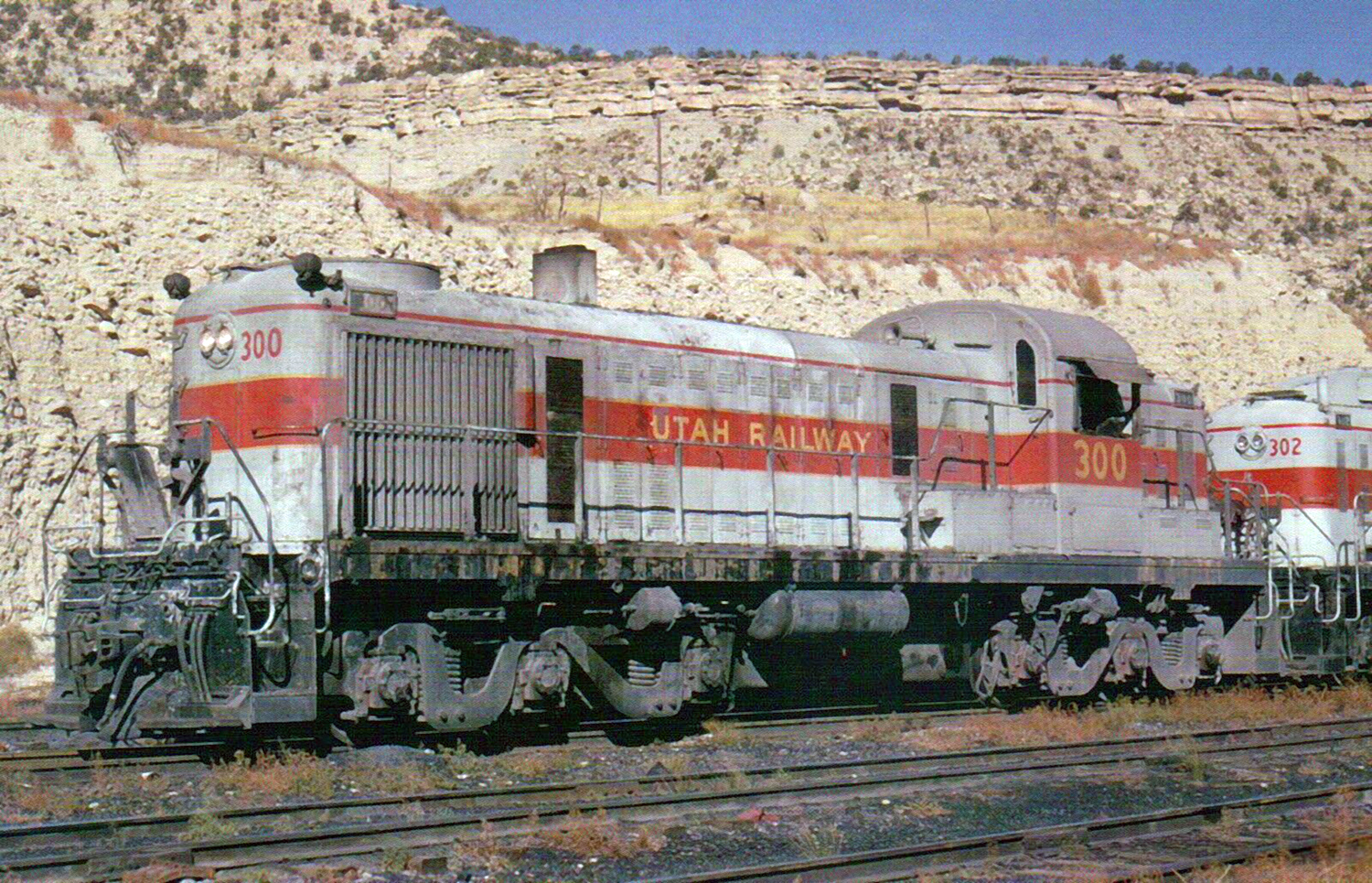
RSD-5: Alco, seeing EMD's success with their 6-axle SD7, regrouped and launched the RSD-5 after discontinuing the RSD-4. The engine now had the 1600hp of an RS-3, while it was lengthened by 8 inches to fit a larger generator. The RSD-5 came out swinging, with 90,000lbs of starting effort, beating EMD's SD7 by 13,000lbs. The RSD-5 sold better than the -4, with 206 units going to a number of buyers. Santa Fe and Southern Pacific were big fans, with 64 and 53 units bought respectively. Alco actually outsold the EMD SD7, with 206 units versus GM's 188. C&NW purchased theirs with steam generators and dynamic brakes, resulting in "hammerhead" units similar to PRR and WM's RS-3s. Today, two restored RSD-5s are preserved and operational.

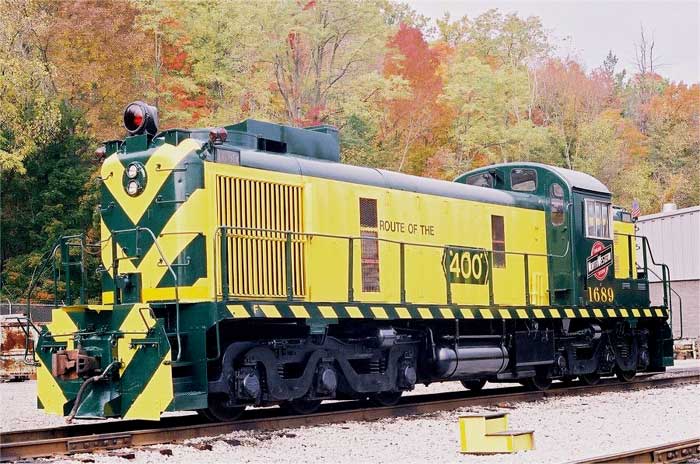
RSD-7: The final model of the early pre-251 RS locomotives, the RSD-7 was an example of Alco losing their way. At this point, Alco really stopped being innovative and became reactionary. If a competitor made a model, Alco copied it, whether it made sense or not. When Fairbanks-Morse dropped the H-24-66 "Train Master", a 2400hp 6-axle bruiser, on the market, Alco decided they had to offer something similar too. This made no sense, because the Train Master was a sales disaster, at only 127 built, so Alco really shouldn't have copied F-M's homework. But they did. The 244 engine was souped up to 2400hp in this final V16 variant called the 244H. Alco actually called it a 250 engine in sales literature, hoping to distance itself from the earlier troubles. Big, heavy (360,000lbs) and powerful, it made 95,000lbs of tractive effort and introduced the new notched-end high hood styling that would become an Alco trademark in the years ahead. But railroads weren't ready for high-HP 6-axle units, and the RSD-7 sold terribly, with only 29 finding homes. When a copy of a sales disaster sells even worse, it was probably a bad idea. No RSD-7s escaped the cutting torch, making them the only early RS to have no surviving examples.

NickD said:In reply to Pete Gossett (Forum Supporter) :
#1385 was parked in 1998, needing major boiler work. They had a brand-new boiler built just last year and I believe are getting pretty close to firing her up again.
Wow, that would be awesome! I should check the back & see if there are dates on those pics, but they'd have to be from around 81-83ish.
The RSD-7 was considered the last of the first-generation RS locomotives. In 1956, they introduced the RS-11, the first of the second-generation RS series switchers. Although good locomotives in their own right, they never managed to duplicate the success of the RS-3. A sad irony was that, railroads moved away from buying Alcos largely due to the troubles with the 244 engine, but by the time of the later RS engines, Alco had replaced them with an all-new engine, called the 251, that fixed the 244's problems and was much more reliable. The other big issue was that while EMD manufactured their own electrical and brake components, Alco was buying their electrical parts from partner GE and their air brake componentry from Westinghouse, making a comparable Alco more expensive.
RS-11: The RS-11 was Alco's 1956 response to the EMD GP9. Like the RS-3 before it, on paper the RS-11 was the superior locomotive. The new V12 251B engine made 1800hp, 50 more than a GP9, but with 4 fewer cylinders. It made more starting and continuous tractive effort as well. Styling-wise, it continued the trend started by the RSD-7, which was cab height hoods on both ends with notches at the top for the number boards. A low nose was offered but only D&H and Southern Pacific purchased them, and even then, they only bought a few, the majority of their fleets having tall hoods. Production ended in 1964, with a total of 462 units sold, a sharp decline from the RS-3 and only about a tenth of GP9 sales (which sold 4,277 units). And even more insultingly, some of those sales were due to EMD being backlogged on GP9 orders and railroads being forced to turn elsewhere to get their hands on new motive power.
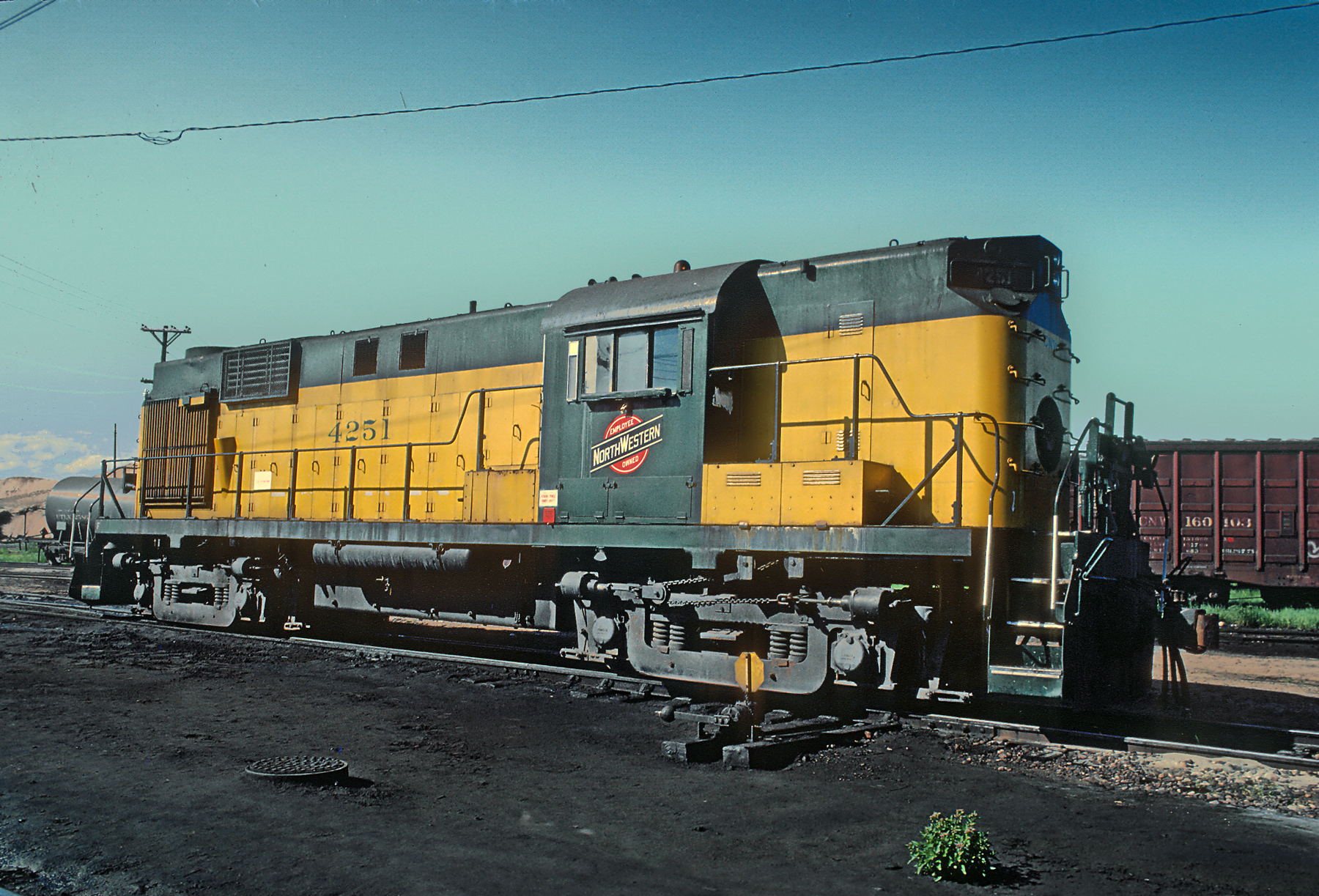
RSD-12: Introduced in 1956, and sold until 1963, the RSD-12 was the six-motor version of the RS-11 and the competitor to the EMD SD9. That it arrived to the market two years after the SD9 did not help Alco's image of being reactionary instead of revolutionary. The RSD-12 was a bruiser, with the highest continuous tractive effort from an Alco product so far, at 75,000lbs, and a healthy 81,250lbs starting, although the SD9 even outperformed it there. In the end, only 171 RSD-12s rolled out of Schenectady, less than the preceding RSD-5 and only about a third of EMD SD9 production, and only 69 of those were for US markets, with the majority going to central America
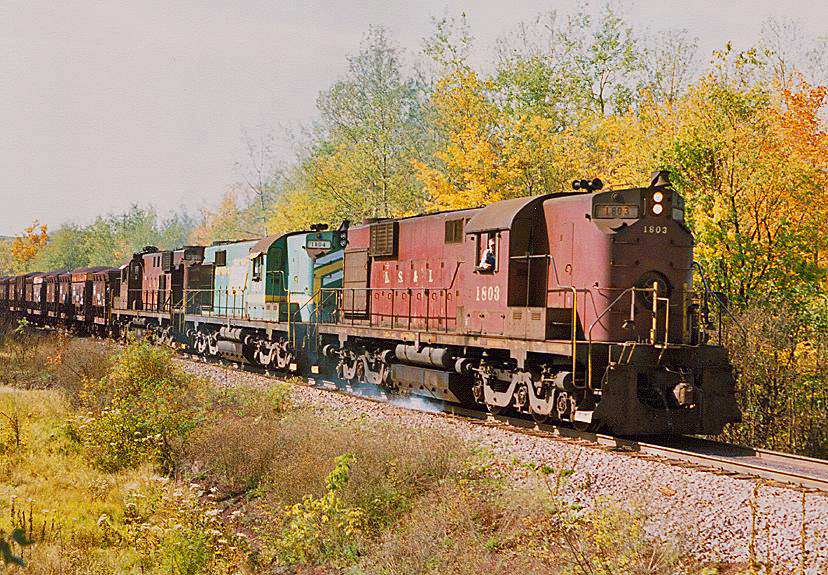
RSD-15: Offered concurrently from 1956-1960 with the RSD-12 was the RSD-15, nicknamed Alligators for their long low hood. The RSD-15 was the final 6-axle RS series to be produced. Designed to be a replacement for the unpopular RSD-7, the RSD-15 was another stab at the 2400hp 6-axle market, with a V16 251B engine, a GE GT586 generator and 6 GE 752 traction motors. At 66 feet, 7 inches long, 335,000lbs in weight and developing 95,000lbs of starting tractive effort, the RSD-15 was a serious piece of equipment. But, like the RSD-7 and the FM H-24-66, railroads still just weren't that enthused about high-power 6-axle units at the time. Even EMD's SD24, which released two years later in 1958, saw only middling sales. The RSD-15 only sold 75 units, with Santa Fe buying two thirds of them, and 6 of the Alligators are preserved these days, with two operational. The RSD-15 would be the last RSD produced, although when Alco came out with the Century series, they did offer 2800hp, 3000hp and 3600hp 6-motor variants.

RS-27: Backwards of usual convention, where Alco released the 4-motor version RS first and then the 6-motor RSD after (or sometimes concurrent), the RS-27 was a 4-axle version of the RSD-15 that was introduced 3 years later in 1959. Although it beat EMD's 2250hp GP30 to the market by two years, Alco now had a new competitor on their hands, and it was their old partner GE. GE, tired of being paired up with the distant second manufacturer, decided to enter the market on their own, building their own turbocharged 4-stroke diesel engines and using their own electrical. The GE U25B hit the market in 1959 and offered more power, more tractive effort, was cheaper (GE didn't have to purchase parts from outside sources like Alco) and more reliable. The RS-27 name was prophetic, as Alco only sold 27 of them, compared to the 478 GE U25Bs (both of which paled in comparison to EMD's 948 GP-30s, despite the 30 hitting the market 2 years later with less horsepower). While the RSD-15 was distinctive for it's long nose, the RS-27's nose was extremely stubby, almost as if to average out. Today, two RS-27s remain in active use on Minnesota Commercial's rails.
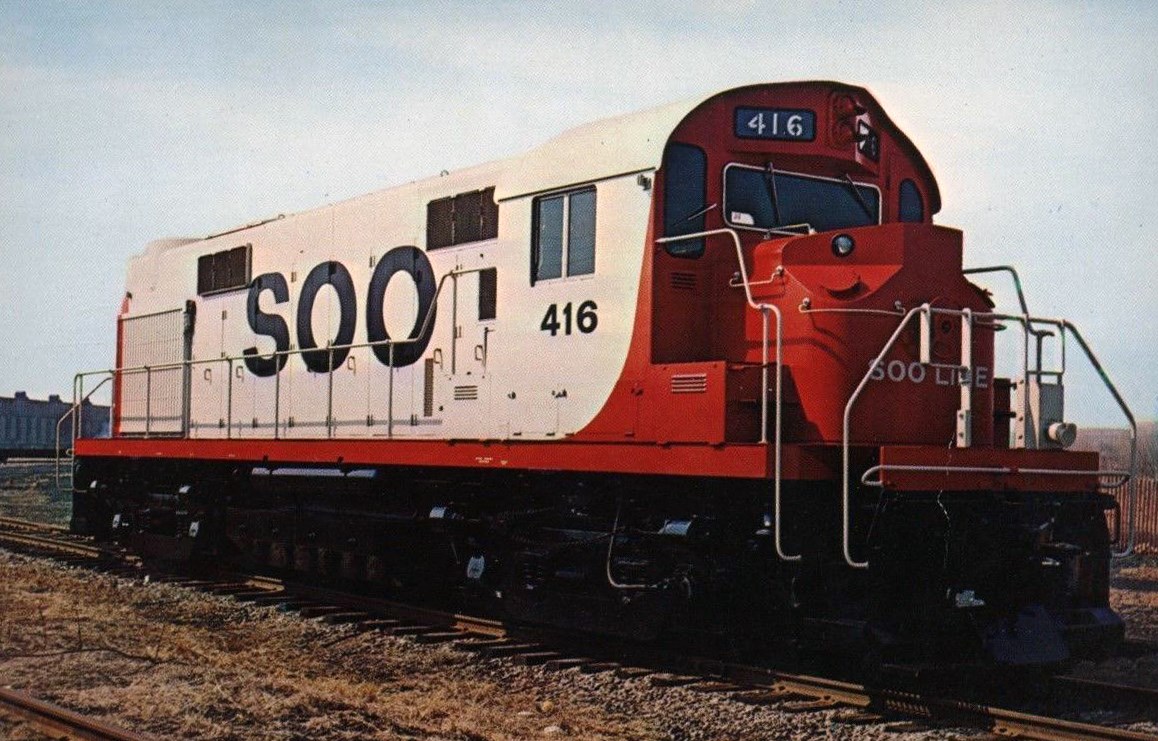
RS-32: Released in June of 1961 and only sold through June of 1962, the RS-32 was essentially an upgrade to the retired RS-11. Using a carbody similar to a low-nose RS-11 or RSD-12 but riding on the RS-27's frame, it used a 2000hp V12 engine called the 251C. Designed to compete with the EMD GP20, EMD's first turbocharged model and not a particularly successful offering in itself, the RS-32 offered more slightly more starting tractive effort but much less continuous tractive effort. It was also more expensive, now that GE was not cutting Alco any deals on electrical components. The RS-32's model name was almost as prophectic as the RS-27s, as only 35 RS-32s found homes. New York Central bought 25 of them, while Southern Pacific bought 10. Five of them still exist, with 4 in regular operation and one preserved in a museum.

RS-36: Alco's strategy by this point seemed to be to throw a bunch of models at the market and see which one stuck. Unfortunately for them, the result was that none of them were sticking and Alco's flailing attempts were beginning to makes its future look increasingly fuzzy. Essentially replacing the unpopular RS-32, the RS-36 was sold from February of 1962 to August of 1963. It actually had a reduction of power from the RS-32, making only 1800hp, which basically meant it was a rerelease of the RS-11. Alco claimed it was meant to go against the EMD GP30, although how that made sense when the GP30 packed almost 500hp more is anyone's guess. Another unpopular release, it did sell more units than the RS-27 and RS-32 but not by many. Seven roads purchased a total of 50 units, with Alco stalwart Delaware & Hudson grabbing the most (12). After the RS-36, Alco would regroup with a streamlined lineup in the Century series before going out of business in 1969.

Some pretty big news is that Reading #1187, an 0-4-0 Camelback, has been sold by Strasburg Railroad to Age Of Steam Roundhouse. But for Reading in 1907, the little 0-4-0 was used until 1946, at which point it was sold to E&G Iron Works in Birdsboro, PA and renumbered to #4. In '62, E&G retired the engine and Strasburg Railroad, who was still newly reorganized as a tourist line, decided to purchase the #1187, which was only 1 of 5 surviving Camelbacks and the only one still operational. But when the flue time ran out in 1967, #1187's historical curiosity wasn't enough to warrant keeping it in operation. Even with just a short 4.5 mile route with minimal grade and the short 2-3 car consists that Strasburg ran in their early days, #1187 still had to stop several times on each trip to build up steam pressure. Also, by this time, Strasburg had acquired bigger and more powerful motive power in 2-10-0 #90.
So the #1187 was retired and, because Strasburg was not in the display business, they sent it across the street to the Railroad Museum of Pennsylvania, who put it on display. And there it sat for 5 decades. The problem was, RRMoPA had limited outdoor storage space, so the engine severely degraded over the years.


The RRMoPA's own restoration shops weren't capable of repairing it, as they were primarily focused on the PRR engines in their collection, and Strasburg's shops aren't in the business of cosmetic restoration, plus are so busy that they haven't finished the overhaul of their 0-6-0 #31. After the engine's center cab literally fell apart, it was moved back across the street to Strasburg and shoved out in their dead line. Over the years, people have begged Strasburg to restore and fire up #1187 again, but they don't have the time and it's even less practical for their use nowadays, as they move 300,000 people a year currently and run longer trains.
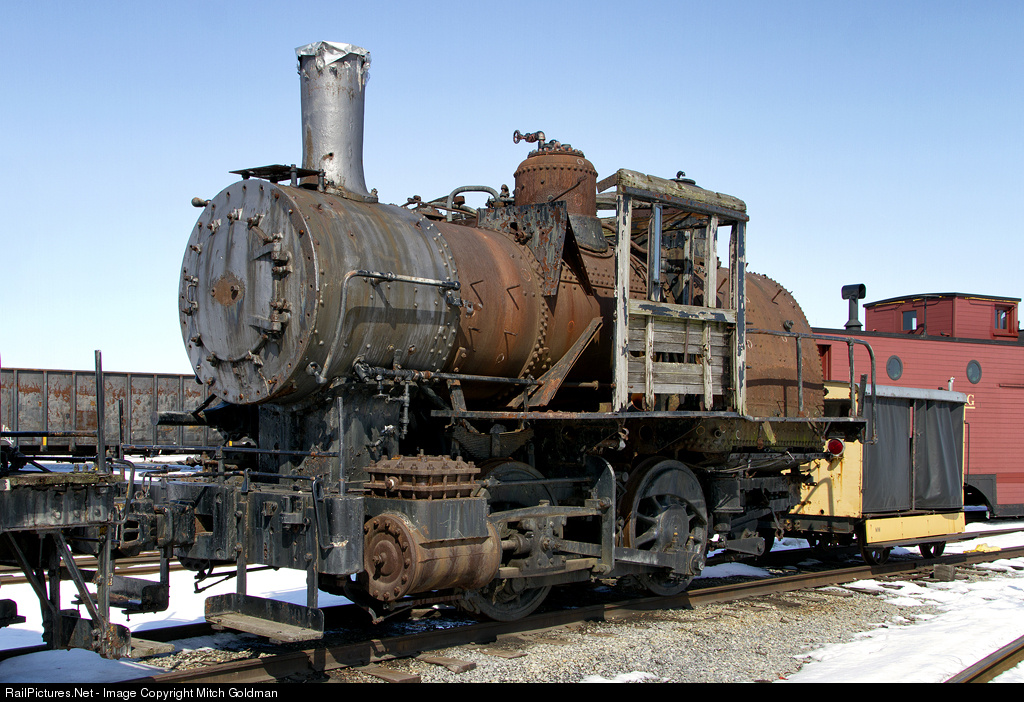
And then out of the blue, Strasburg announced they had held a private auction and sold off #1187 to Age of Steam Roundhouse, and #1187 will be headed to Ohio to be restored. Apparently, a number of historical societies and museums were interested in #1187 and had made offers to Strasburg, so Strasburg held a private auction with those groups and AoS won. AoS founder J.J. Jacobson had ridden behind #1187 during its short tenure and always wanted to purchase it, plus AoS was looking to add a Camelback to its collection, and there are only 5 of them. No word on if they will restore it to operation, but they will at least cosmetically restore it, which is good news for the little switcher.
Long after everyone else had mostly retired their Fairbanks-Morses, Southern Pacific kept their big H-24-66 "Train Masters" running the Peninsula Commute from San Francisco. Like D&H was for Alcos, Espee had a love for their F-Ms. The H-24-66's ability to outpull and outaccelerate just about anything on the market made them useful in commuter service.

Interestingly, some of the SP's Train Masters had originally built for New York Central, but the New York Central ended up cancelling their order and refusing delivery of the constructed units. Most likely, the NYC, like other railroads, was tired of the maintenance required by the oddball vertically opposed-piston, 12-cylinder/24-piston, supercharged 2-stroke diesels engines.

Stopped at the Revelstoke Railway Museum on my trip through B.C. this week and took some pics.
The engine is a Mikado built in 1948 by Montreal Locomotive Works.





Some outside pics:



So here's a railroad question for Nickd or anyone else who may know. My son was watching the virtual railfan cam in Galesburg, IL the other day. I wasn't paying much attention to it as I was working on a project at the time, and it's often on "in the background" at our house. My son asked, "Hey dad, why does that Amtrak have a BNSF engine?" I looked up and, sure enough, there was a BNSF engine, 2 P42's and a "longish" Superliner train heading out. By "longish" it didn't appear to long for a pair of P42's. Since I was stumped, I thought I'd ask here.
The only "oddball" fact (besides a freight engine on an Amtrak) was that there was a MOW crew working on the tracks nearby. I wondered if the BNSF engine was a "guide" because of the trackwork, but it never came back.
Solid info or wild speculation welcomed.
I drove up to Thendara on Saturday (was just out for a drive in the Mazda) and swung by Adirondack Railroad's Thendara depot. I caught their Alco RS-3 #8255 and EMD SW1 #705 resting at the yard. Both wear New York Central livery, and while #8255 is genuinely ex-NYC and likely operated on their Adirondack Division, the SW1 is actually ex-L&N
02Pilot said:Amtrak broke down and BNSF had to drag it out of the way to clear the tracks?
Seems kind of unlikely, because, if so, they were actually dragging it OUT of the yard, which is were I would assume they would leave a broken down train. I suppose they could have been taking it to an Amtrak repair facility.
kazoospec said:So here's a railroad question for Nickd or anyone else who may know. My son was watching the virtual railfan cam in Galesburg, IL the other day. I wasn't paying much attention to it as I was working on a project at the time, and it's often on "in the background" at our house. My son asked, "Hey dad, why does that Amtrak have a BNSF engine?" I looked up and, sure enough, there was a BNSF engine, 2 P42's and a "longish" Superliner train heading out. By "longish" it didn't appear to long for a pair of P42's. Since I was stumped, I thought I'd ask here.
The only "oddball" fact (besides a freight engine on an Amtrak) was that there was a MOW crew working on the tracks nearby. I wondered if the BNSF engine was a "guide" because of the trackwork, but it never came back.
Solid info or wild speculation welcomed.
Hmmmm, that is odd. What day was it? And was the BNSF engine a newer safety cab style nose or the old traditional (like GP40) style nose? The reason I ask that is safety cab units are typically road engines, while most regular cab locomotives are relegated to yard duty these days.
If I had to take a guess: one of the Amtrak locomotives failed out on the mainline with passengers aboard, BNSF had spare locomotives closer than Amtrak and so sent one of their engines to go get the Amtrak train to its destination and out of the way of BNSF's freight trains. Amtrak is kind of an unwanted house guest among the freight lines: they don't want it to run over their tracks but the government says they have to and they'd rather that than have to run the passenger service themselves.
You'll need to log in to post.